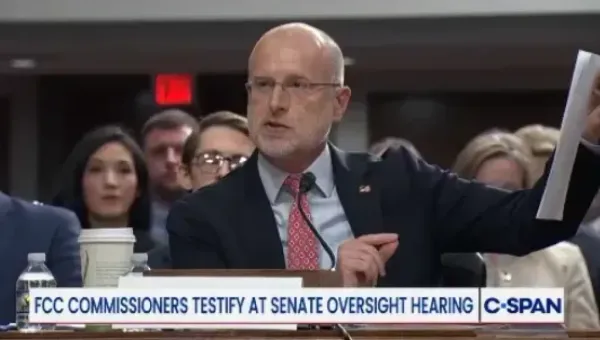Information Technology: Environmental Boosters, But Not As Green As You Might Think
WASHINGTON, October 28, 2009 – Many think of oil and paper industries as enemies in the war against climate change. They think of sport utility vehicle drivers and excessive paper use as contributing factors to global warming. But what about the carbon footprint of the information technology industr
WASHINGTON, October 28, 2009 – Many think of oil and paper industries as enemies in the war against climate change. They think of sport utility vehicle drivers and excessive paper use as contributing factors to global warming. But what about the carbon footprint of the information technology industry: the personal computers, e-mails, spam messages and electricity required to support internet infrastructure?
Information Technology Feeds Off Electricity
Information technology companies and products thirst for electricity. A 2007 study from Garnet found that the global information and communications technology industry accounts for roughly two percent of global carbon dioxide emissions through the use of PCs, servers, cooling, fixed and mobile telephony, local area network), office telecommunications and printers.
According to another 2008 study, “the amount of electricity used by servers and other Internet infrastructure has become an important issue in recent years.”
The research by Jonathan Koomey, currently a visiting professor at Yale University’s School of Forestry and Environmental Studies, found that aggregate electricity use for data centers, or facilities used to house computer systems and associated components such as storage systems, “doubled worldwide over the period 2000–2005. Almost all of this growth was the result of growth in the number of volume servers, with only a small part of that growth being attributable to growth in the power use per unit.”
It’s not just the information technology companies that are big energy users. Technology products in the home leave a carbon footprint as well.
“Many people don’t realize that the average desktop PC wastes nearly half the power it draws from the wall socket,” according to a guide put together by Microsoft. “This excess energy is dissipated as heat. The average server wastes 30 to 40 percent of its power. Through electricity usage, a computer running 10 or more hours per day can account for as much as one-tenth of a car’s annual CO2 emissions. With more than a billion computers in use worldwide today, the wasted electricity and resulting CO2 emissions are tremendous,” the company said on its web site.
Earlier this year a study conducted by climate-change consultants ICF – and commissioned by security vendor McAfee –found that deleting spam and searching for legitimate e-mail labeled as junk is equivalent to the electricity used in 2.4 million U.S. homes and the greenhouse gas emissions equivalent to 3.1 million passenger cars.
Industry Wants To Be Greener
Although a big user of electricity, the information technology industry is also a hefty proponent of green. The sector’s underlying drive to innovate and business incentives to decrease energy consumption contributes to the green push.
A number of the largest technology companies have devoted pages on their web sites, as have companies in other sectors, focused on specific ways they are looking to reduce their carbon footprints.
Google, for example, said on its web site that its products require extensive computer infrastructure and a lot of electricity to run effectively, but that the company has committed itself to “being carbon neutral” by looking at ways to increase its own energy efficiency, examining energy source alternatives and investing in projects to offset greenhouse gas emissions.
Intel, meanwhile, plans to reduce energy consumption by an average of four percent per production unit per year from 2002 through 2010.
Microsoft, for example, says that it has a goal of reducing, by 2012, its carbon emissions per unit of revenue by at least 30 percent of 2007 levels. The company said that “we believe that our footprint goals will be met by leveraging software and technology.”
Government Funding Recognizes Information Technology Potential
On Tuesday, President Obama announced a $3.4 billion government investment that will be matched by industry funds to modernize the electric grid and thus reduce electricity use by more than 4 percent by 2030. The plan is for consumers to be able to use “smart meters” to pay their electricity bills. These devices will enable customers to program their appliances and equipment to run when electricity rates are the lowest.
The initiative plans to fund the deployment of digital monitoring devices and increase grid automation. The White House said the introduction of sensors to cover the electric grid, among the use of other new technologies to combat global warming, will additionally create thousands of new jobs for information technology professionals and cyber-security specialists.
This month the Environmental Protection Agency Administrator Lisa Jackson said the government has been soliciting ideas online from federal employees and military personnel for ways to conserve energy, cut costs and reduce greenhouse gases. “If your entire agency turns off every computer, monitor and workspace light tonight, we estimate savings of thousands of dollars and hundreds of pounds of greenhouses gases – in just one day. If we stick with it every day of the year, the results really add up,” she wrote in a blog post Tuesday.
The Broadband Breakfast Club
Editor’s Note: Join the next Broadband Breakfast Club on Tuesday, November 10, 2009, when a panel of experts — including Jennifer Alcott, Telework!VA Program Manager, Commonwealth of Virginia; Kevin Moss, Head of Corporate Social Responsibility, BT Americas; and Steven Ruth, Professor, George Mason University School of Public Policy — will discuss “Setting the Table for the National Broadband Plan: The Environment.”
Among the questions to be considered are how carbon-positive a technology is broadband? What’s keeping telecommuting from being more widely adopted as a technology? What are the other “green” benefits of broadband communication, and how can the National Broadband Plan best encourage them? Register at http://broadbandbreakfast.eventbrite.com










Member discussion